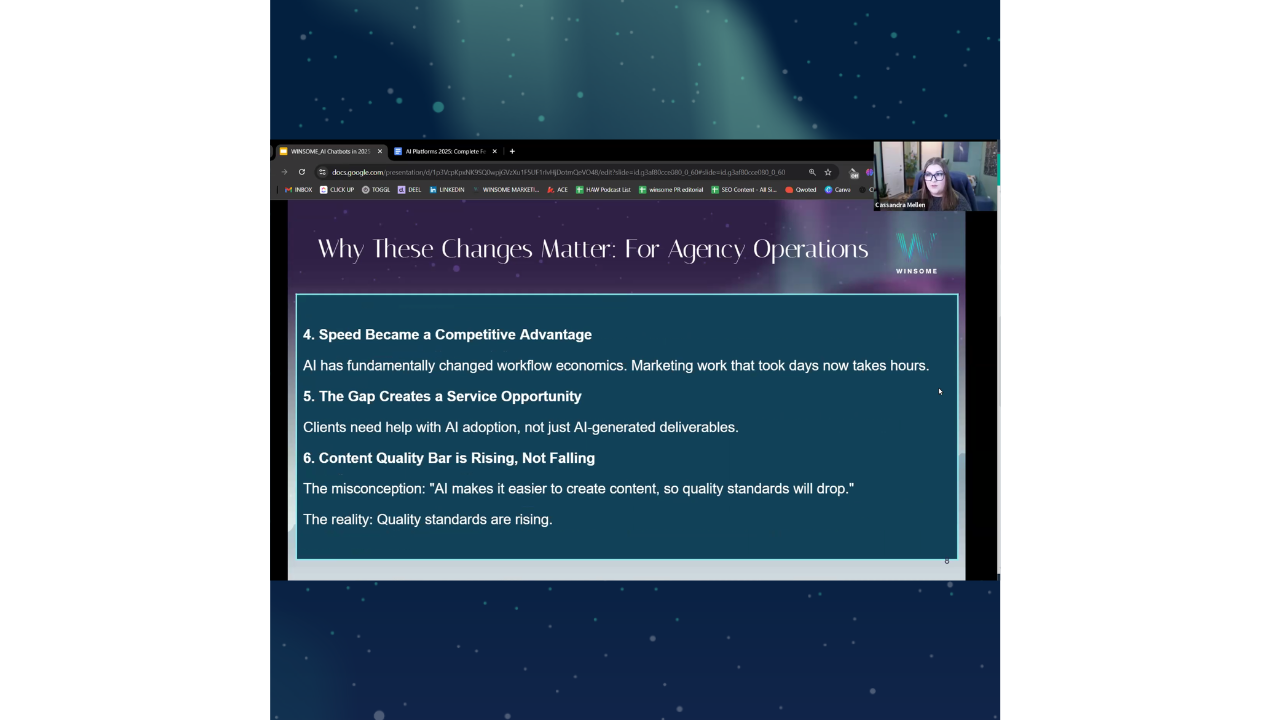Why Your Content Strategy Needs Distribution Channels Before It Needs More Content
I've been thinking a lot lately about what it means to sell content in 2025. And honestly? Those beautiful 15-blog packages we used to offer don't...
4 min read
 Writing Team
:
Oct 20, 2025 8:00:00 AM
Writing Team
:
Oct 20, 2025 8:00:00 AM
.png)
You've got brilliant content. Congratulations. Now here's the uncomfortable truth: publishing it at the wrong time is the digital equivalent of throwing a dinner party when everyone's at someone else's dinner party. Your timing matters almost as much as your content itself, and pretending otherwise is just expensive denial.
News cycles operate on their own brutally efficient schedule, completely indifferent to your editorial calendar or quarterly goals. Breaking news doesn't wait for your content approval process, and trending topics have the lifespan of mayflies.
The challenge? Your meticulously researched piece about AI ethics gets published the same day a major tech company announces layoffs affecting 10,000 employees. Guess which story captures attention? Spoiler: it's not yours.
Smart content strategists don't fight news cycles—they work around them. This means monitoring what's dominating headlines in your industry and either publishing complementary content that adds context or holding your piece until the noise dies down. Publishing "5 Ways to Improve Workplace Culture" during a high-profile discrimination lawsuit in your industry isn't strategic timing; it's stepping on a rake.
People's interests follow remarkably consistent seasonal patterns. Tax preparation content performs in March and April, not August. Career development articles spike in January and September. Healthcare enrollment guides matter in October and November, not April.
This isn't rocket science, yet marketing teams routinely ignore these patterns. They publish summer vacation destination guides in December or back-to-school content in June, then wonder why engagement tanks. The content isn't necessarily bad—it's just badly timed.
For B2B content, seasonality operates differently but no less predictably. Budget allocation content peaks in Q4 and Q1. Summer months see reduced engagement as decision-makers take actual vacations. Year-end brings reflection pieces and predictions for the coming year. Publishing counter to these patterns requires exceptional content to overcome the timing disadvantage.
Every piece of content has what we'll call a "relevance window"—the period during which it matters most to your audience. This window varies dramatically by content type and topic.
Breaking news commentary? Twenty-four to forty-eight hours, maximum. After that, you're adding to a conversation that's already moved on. Industry analysis of quarterly earnings? Maybe a week before everyone's focused on the next quarter. Evergreen how-to guides? Potentially years, assuming the underlying processes don't change.
The relevance window determines your publication strategy. Time-sensitive content demands rapid production and immediate publication. Miss the window, and the content becomes historical rather than current—which might still have value, just different value.
Here's where content marketing gets interesting: you can sometimes create relevance windows through strategic timing. Publishing predictive analysis before an anticipated announcement positions you as forward-thinking. Posting reaction pieces immediately after major events establishes thought leadership. Waiting too long transforms you into just another voice in an already-crowded conversation.
Your audience develops expectations about when to expect content from you. Daily? Weekly? Monthly? Sporadic bursts followed by silence? These patterns train your audience either to check regularly or to ignore you entirely.
Consistency matters more than frequency. Publishing three times weekly works—if you actually publish three times weekly. Publishing "whenever we have content ready" trains your audience that you're unreliable, and they'll adjust their attention accordingly. They'll stop checking. They'll unsubscribe. They'll forget you exist.
This doesn't mean quantity trumps quality. It means establishing a sustainable rhythm you can actually maintain. Weekly high-quality content beats daily mediocrity every single time. But irregular excellent content loses to consistent good content because audiences disengage when they can't predict when to expect value from you.
More content isn't automatically better content—but it's not automatically worse either. The sweet spot depends entirely on your resources, audience expectations, and content quality standards.
Some audiences want daily insights. Technology news consumers expect multiple updates per day. Other audiences prefer weekly deep dives. B2B decision-makers often value monthly comprehensive analyses over daily snippets. Understanding which camp your audience occupies determines your optimal cadence.
Here's the uncomfortable part: increasing volume while maintaining quality requires proportional resource increases. You can't magically double output without doubling input—time, talent, or both. Content creation isn't a process you optimize into infinite efficiency. Human limitations remain stubbornly resistant to workflow improvements beyond a certain point.
The granular details matter: time of day, day of week, even hour of day affect content performance. B2B content often performs better Tuesday through Thursday, mid-morning or early afternoon when professionals are at their desks but not yet drowning in afternoon meetings. Consumer content might peak evenings and weekends when people have leisure time to engage.
These patterns aren't universal—they're audience-specific. Your analytics tell you when your audience engages most. Publishing at peak times for "general audiences" when your specific audience behaves differently is remarkably common and remarkably pointless.
Social media amplifies timing effects. Publishing when your followers are online increases initial engagement, which triggers algorithmic visibility, which drives further engagement. Publishing when they're asleep buries your content before it has a chance to gain traction. This compounds: content that starts strong continues performing well; content that starts weak never recovers.
Some timing mistakes are predictable enough to avoid entirely. Don't publish promotional content during tragedies. Don't launch controversial opinions during crisis moments in your industry. Don't schedule social posts about minor topics when major news dominates headlines.
This requires monitoring current events and having flexibility in your publication schedule. Your carefully planned Tuesday post about workplace productivity might need to wait if Tuesday morning brings unexpected industry-shaking news. Rigid adherence to editorial calendars creates tone-deaf publication moments that damage your brand.
Effective content cadence combines consistency with flexibility. You maintain regular publication rhythms that train audience expectations while preserving agility to respond to unexpected opportunities or threats.
This means planning content ahead but not so far ahead that you can't adjust. It means understanding your relevance windows without letting them paralyze production. It means respecting news cycles without becoming reactive rather than strategic.
Most importantly, it means recognizing that perfect timing matters less than consistent execution. Publishing good content regularly at suboptimal times outperforms publishing perfect content irregularly at theoretically optimal times. Your audience needs to know you'll be there—that's more valuable than being there at exactly the algorithmically perfect moment.
Content cadence isn't about gaming systems or exploiting timing tricks. It's about understanding when your audience is ready to engage, what's competing for their attention, and what rhythm of content delivery builds rather than depletes trust.
The science isn't complicated. The execution requires discipline, attention, and willingness to prioritize timing alongside quality. Most content creators nail one or the other. Nailing both? That's what separates content that performs from content that transforms.
-2.png)
I've been thinking a lot lately about what it means to sell content in 2025. And honestly? Those beautiful 15-blog packages we used to offer don't...

There's a misconception that AI makes it easier to create content, so quality standards will drop. The reality? They're rising.
 Read More
Read More